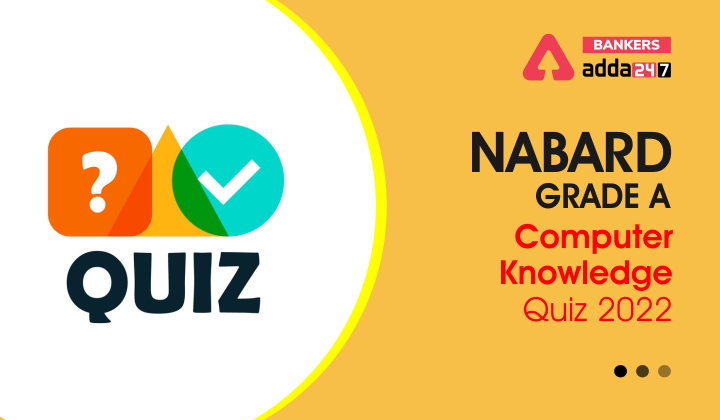Q1. Which of the following software programs gets activated after a pre-defined event occurs?
(a) Malware
(b) Spyware
(c) Logic Bomb
(d) Adware
(e) Worm
Q2. Which of the following virus can infect both program files and system sectors?
(a) Micro Virus
(b) Direct Action Virus
(c) Polymorphic Virus
(d) Multipartite Virus
(e) None of these
Q3. Which type of virus is hard to detect as it changes its own code to evade matching a virus signature?
(a) Boot sector virus
(b) Macro virus
(c) Polymorphic virus
(d) Stealthy virus
(e) None of these
Q4. The attack that focuses on capturing small packets from the network transmitted by other computers and reading the data content in search of any type of information is ____
(a) Phishing
(b) Eavesdropping
(c) Scams
(d) Exploits
(e) Denial of service
Q5. What is the full form of WORM?
(a) Write Once Read Many
(b) Wanted Once Read Memory
(c) Wanted Original Read Memory
(d) Write Original Read Memory
(e) None of the above
Q6. Which of the following virus inserts malicious code into executable files — files used to perform certain functions or operations on a system.
(a) Micro Virus
(b) Boot Sector Virus
(c) File Infector Virus
(d) Polymorphic Virus
(e) None of these
Q7. Which of the following is the type of software that has self-replicating software that causes damage to files and system?
(a) Viruses
(b) Trojan horses
(c) Bots
(d) Worms
(d) Backdoors
Q8. _________ is the action of recording the keys struck on a keyboard, typically covertly, so that the person using the keyboard is unaware that their actions are being monitored.
(a) Denial of service
(b) Exploits
(c) Scams
(d) Keylogging
(e) Spamming
Q9. _______________ infects the master boot record and it is challenging and a complex task to remove this virus.
(a) Boot Sector Virus
(b) Polymorphic
(c) Multipartite
(d) Trojans
(e) None of these
Q10. Which virus deletes all the files that it infects?
(a) Non-resident virus
(b) Overwrite Virus
(c) Polymorphic Virus
(d) Multipartite Virus
(e) None of these
Solutions
S1. Ans.(c)
Sol. Logic bombs are programs or code snippets that are executed when a pre-defined event occurs. They are kept secretly into the code of existing software, where they lie inactive till a pre-defined event occurs.
S2. Ans.(d)
Sol. A virus which can attack both, the boot sector and the executable files of an already infected computer is called a multipartite virus. If a multipartite virus attacks your system, you are at a risk of cyber threat.
S3. Ans.(c)
Sol. A polymorphic virus is a complicated computer virus that affects data types and functions. It is a self-encrypted virus designed to avoid detection by a scanner. Upon infection, the polymorphic virus duplicates itself by creating usable, albeit slightly modified, copies of itself.
S4. Ans.(b)
Sol. Network eavesdropping is a network layer attack that focuses on capturing small packets from the network transmitted by other computers and reading the data content in search of any type of information.
S5. Ans. (a)
Sol. In computer storage media, WORM (write once, read many) is a data storage technology that allows information to be written to a disc a single time and prevents the drive from erasing the data. The discs are intentionally not rewritable, because they are especially intended to store data that the user does not want to erase accidentally.
S6. Ans.(c)
Sol. A file infector virus is a type of virus that typically attaches to executable code, such as computer games and word processors. Once the virus has infected a file, it can spread to other programs, and even into other networks that utilize the infected files and programs.
S7. Ans.(d)
Sol. A worm is a type of virus that spreads through your computer by creating duplicates of itself on other drives, systems and networks.
S8. Ans.(d)
Sol. Keystroke logging, often referred to as keylogging or keyboard capturing, is the action of recording (logging) the keys struck on a keyboard, typically covertly, so that the person using the keyboard is unaware that their actions are being monitored.
S9. Ans.(a)
Sol. The boot sector virus is a computer virus that infects a storage device’s master boot record (MBR) of hard disks. During start-up, the infected code runs when the system is booted and gets loaded to the computer’s memory, however, once loaded it will infect other floppy disks when accessed in the infected computer.
S10. Ans.(b)
Sol. An overwriting virus (over writing infector) is a malicious program which, after infection, will effectively destroy the original program code, typically by overwriting data in the system’s memory (overwrites the host program).



 GA Capsule for SBI Clerk Mains 2025, Dow...
GA Capsule for SBI Clerk Mains 2025, Dow...
 The Hindu Review October 2022: Download ...
The Hindu Review October 2022: Download ...
 IBPS Clerk Mains Cut Off 2025, Check Sta...
IBPS Clerk Mains Cut Off 2025, Check Sta...







